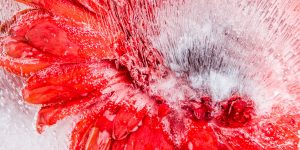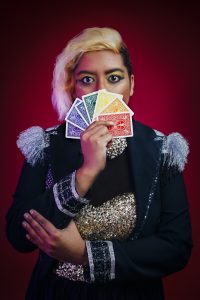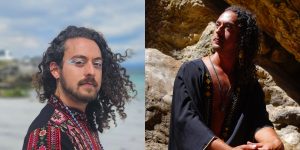Archer Asks: Artists J Davies and Scarlett Mallia on queer self-expression
By: Archer Magazine

To celebrate the upcoming art exhibition The Future Feels Familiar, as part of LCI Melbourne, we interviewed artists J Davies and Scarlett Mallia about community, queerness, arts practice and more.
J Davies is a Māori, agender and Takatāpui artist who uses photography to document their life as well as their queer community. In their ongoing practice of archiving contemporary queer existence in Melbourne, Davies cultivates a connection to community and culture while touching on themes of identity, intimacy and neurodiversity.
Scarlett Mallia (she/her) is a multidisciplinary Melbourne-based visual artist, working predominantly in painting, sculpture, film, photography and installation. Her work explores the life experiences that connect us as humans.
Header image by: J Davies
Amid the cinematic sunsets, lived-in homes and dimly-lit dance floors of Naarm, J Davies captures scenes of intimacy and queer communion.
Their work is rich with sentimentality, offering romantic remnants and reflections on queerness, joy, desire, safety and finding space through the lens of a camera. With their fly-on-the-wall, sometimes voyeuristic approach, J’s analogue and polaroid photographs allow viewers to peek into the personal, the vulnerable and the private, and find connection.
Like the nostalgic glow of golden hour, rekindling now-faint emotions shared with friends and whānau, The Future Feels Familiar celebrates the act of holding on to loves, new and old, in whatever form feels right.
The exhibition opens at LCI Melbourne, Collingwood, on Thursday 22nd August from 5pm-8pm.
Archer Magazine: Welcome! We’re so happy to be in conversation with you! Art, queerness, inclusion, representation and neurodiversity are some of our favorite topics of conversation. Please tell us about what’s coming up at LCI this month, and why it’s meaningful for you both.
J Davies: On August 22, Scarlett and I will be opening our exhibition at LCI in Collingwood. Our exhibition is titled The Future Feels Familiar after a video work I created for a previous show at James Makin in March. The title of the video work became a prompt in building the exhibition, which consists of a new zine I’m releasing on opening night alongside the video work and a collection of photographic prints and polaroids. Scarlett has been working on a new mixed media tapestry for the show as well.
A lot of our conceptual crossovers cover themes of self-expression and identity, intimacy and connection with a sense of unapologetic defiance. In a world where queer and trans voices are constantly silenced, our identities erased, where our bodies are policed to the point where our bathroom freedoms are being dictated – this exhibition and the conversations it will initiate are vital.
I’m 30 years old, which is far too old to be worrying about what level of my queerness is palatable to anyone, but I’ll take any opportunity to exhibit art that fosters community and connection.

Image by: J Davies
AM: Tell us a little about your work – where is your practice at this present moment, and how did you get to this point in your career?
Scarlett Mallia: My practice right now is super experimental. As a student, I have the amazing opportunity to try heaps of different and unique approaches to art-making. So currently in my practice, I’m just having fun, playing and learning so many new skills, while still connecting to the issues and ideas that I am passionate about.
I have forever loved art; it has always been a part of my life. But it’s only in the last two years of studying that I have really been able to find my passion and love for creating with such meaning. I am finding new ways to bring myself to my art, step out of my comfort zone and see what the art community has to offer – it’s a great feeling.

‘In my head’. Mixed media, 2023. Image by: Scarlett Mallia.
JD: I think I’ve been exhibiting for around 10 years now. I completed a Diploma of Photo Imaging at what is now called NCAT (Northern College of the Arts and Technology), then studied a Bachelor of Fine Art at The Victorian College of the Arts, majoring in photography, but then took some time away from the medium.
After I graduated, I ran away overseas for a year and fell in love with photography again and haven’t looked back.
As a teen, I began using disposable or cheap plastic Lomography cameras to document my friends and the parties we were going to. One of my main early inspirations were family photo albums and the way people documented their lives.
Later, I discovered a plethora of documentary-style photography pioneers whose work archived gender-fuck weirdos and anarchists from the ’80s, drag queens and ballroom from the ’90s, trashbags and skaterboys partying in NYC – all these variations of identities I hadn’t yet come across.
I saw family amongst these frenzies and began my own ongoing family album of my queer family, of my chosen family.
Within my contemporary practice, I utilise photography, video, mixed media sculptural assemblages and writing (prose/poetry) in honest and sentimental ways: focusing on feelings, fostering relationships, figuring out how I exist and the spaces I exist within.
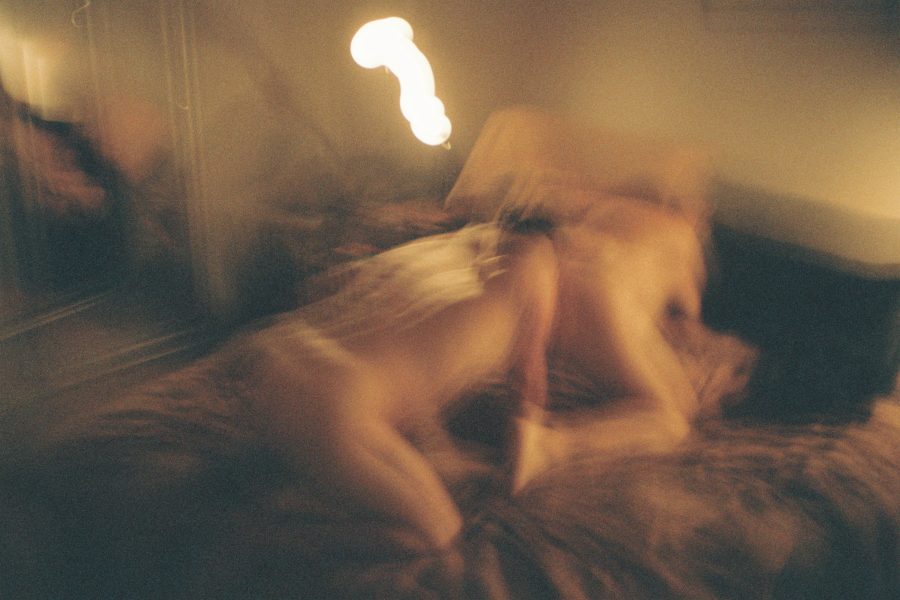
Image by: J Davies.
AM: Tell us how themes of neurodiversity emerge in your work and also how your work is experienced by an audience.
JD: A few years ago, I was diagnosed with ADHD, which shed light on my misunderstanding of time. I’d always had this sense of paranoia that I’d lose my memory and forget everything that ever happened in my entire life – and my attention span is pretty non-existent.
I like to make images that keep me grounded in my life and images that keep me interested in making them. They need to spark some kind of joy in me for me to feel satisfied.
My archive is quite extensive and includes countless mini-series, among larger bodies of work.
In 2022, I began making compilation videos of handycam footage that are edited in a stream of consciousness style, each video flowing into the next in a non-linear format. Often, I install all of these components in one space and collectively they form a sort of constellation – an expansive scene of all the scenes I’ve created before. It’s quite a treat for the neurodiverse eyes that are constantly seeking stimulation.
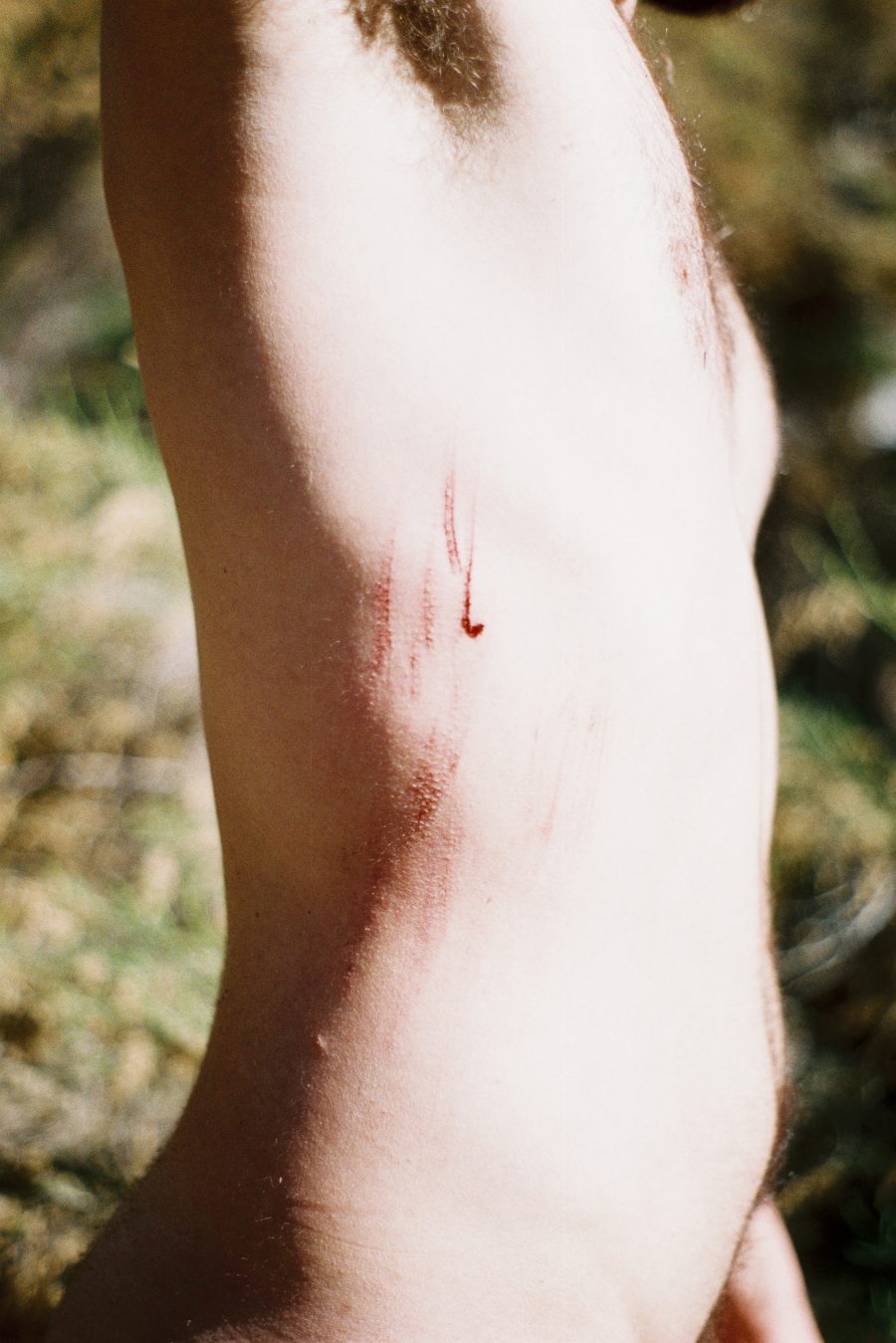
Image by: J Davies.

Image by: J Davies.
AM: As an emerging artist, how did you get your start, and what’s the most important thing you’ve learnt about visual arts?
SM: As I mentioned, I’ve always loved art, but it wasn’t until I finished high school that I realised I could make art that spoke really honestly about my experiences. I feel like my work has had greater impact since then because my connection to what I am producing is much deeper.
I have learnt so much about visual arts since studying at uni. Having teachers from all walks of life and all different disciplines has been inspiring, and they have encouraged me to be myself and be ambitious. I’ve really opened myself up to learning new things. But something I have recently learnt (the hard way) is that no matter who your art is helping, there will still be people who will try to dictate what is ‘right’ and ‘wrong’ about what you are making.
Learning this was a challenge, but with help from my amazing mentor, J, and the curator of this exhibition, GG, I have been able to find a balance within my work that still has the impact I need my work to have, while respecting everyone’s boundaries.
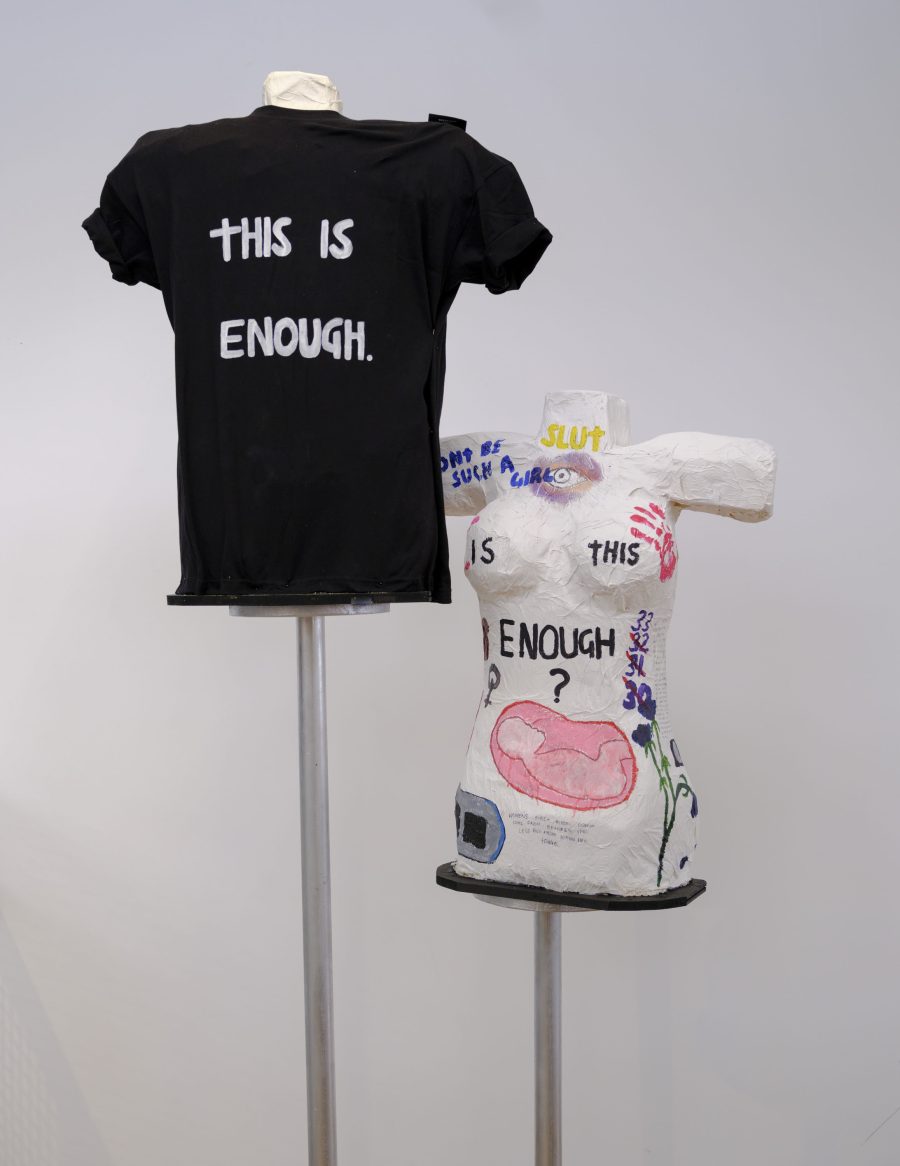
‘Enough’. Sculptural work, made using industrial plaster, expanding form, garments, and paint, 2024. Artwork by: Scarlett Mallia. Image by: Dean Golja.
AM: Queer art often faces scrutiny. How does this challenge impact your drive to create politically charged, authentic art that disrupts the norm?
JD: My work is rooted in the de-stigmatisation of self-expression, of queerness, transness, and of being neurodiverse. It’s a celebration of queer communion and trans liberation.
I’ve had my identity questioned, my voice silenced, and my work consistently censored throughout the entirety of my artistic career. I’m on my 11th Instagram account [laughs].
In the week leading up to my most recent exhibition, I was called ‘t’ slurs at a local gay club by multiple gay men, I was called ‘f’ slurs walking to and from the gym two blocks from my home. I received death threats from anonymous Instagram accounts, and when I reported the messages to Instagram, they later took down my anti-genocide posts to “keep the community safe”.
I then had a gallery redact multiple parts of my exhibition that I had been working on for months, also reiterating those choices were being made to prevent any potential conservatives from complaining.
The notion of performative allyship is nothing new to me, but it is exhausting and boring – and dangerous. You cannot claim to be an ally if your support is conditional, if you’re only tolerant of queers if they fit within your own personal set of beliefs.
I want to be loud and unapologetic for all those who are yet to find their voice, or whose voices have already been systematically removed. I also want young queer and questioning people to see us thriving, I want them to look forward to their futures and see examples of those possibilities within my work.
SM: This scrutiny definitely challenges my drive and motivation. It’s extremely frustrating and can be disheartening, but I think as a young artist who has a lot to say, it’s about finding the best way to say it for the audience that’s viewing it.
I can see that in my future I will have both exhibitions that feature more “controversial” work, and those in which the content is perhaps more acceptable for a general audience. I do, however, feel like the most important lesson to learn from this scrutiny is to keep being yourself, standing up for what you believe in, and representing yourself and the people you love. I will always strive to do that in my work, regardless of criticism.
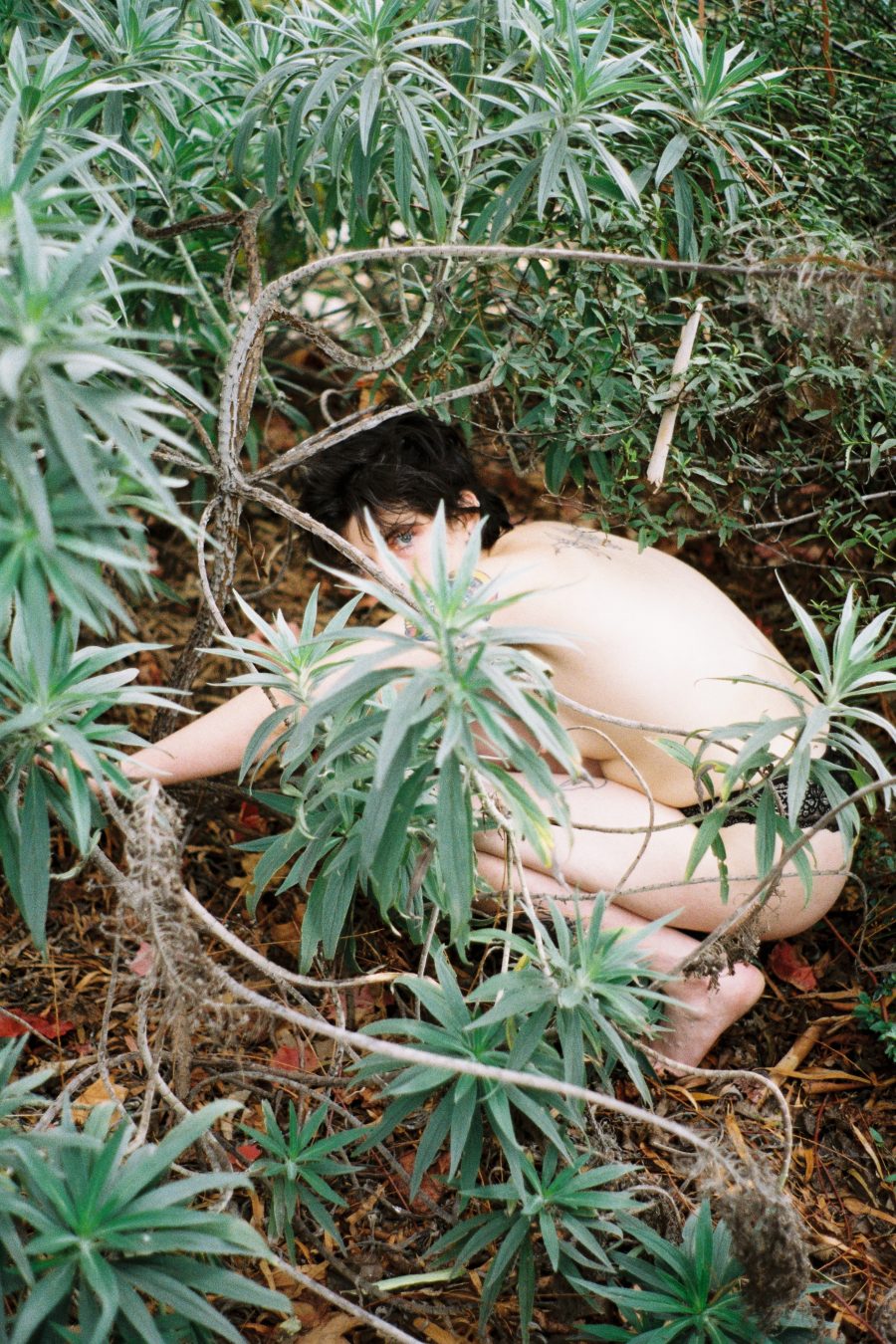
Image by: J Davies.
AM: If you had to use one word to describe your approach to life, what would it be?
JD: Trying (my best).
SM: Unapologetic.
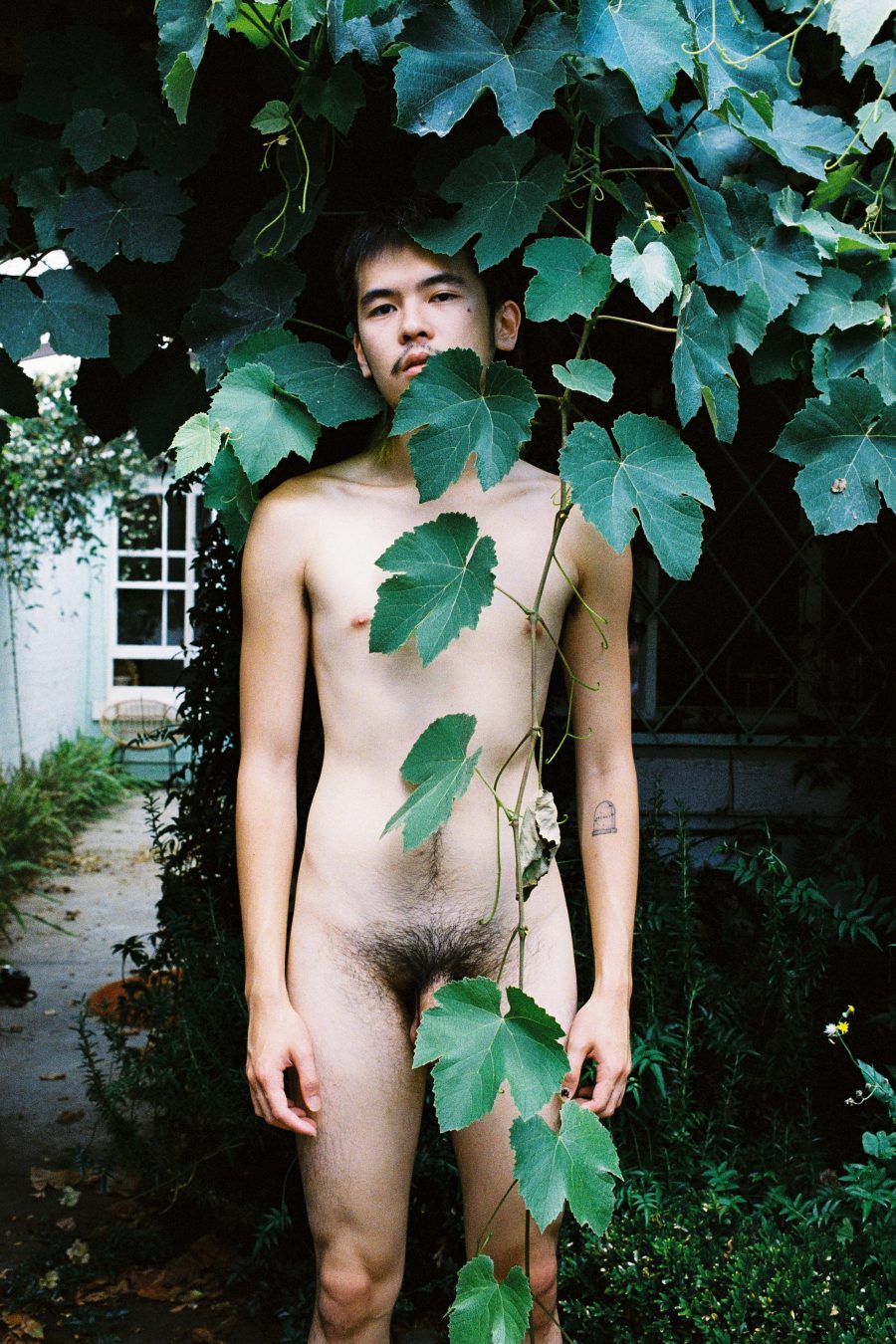
Image by: J Davies.
AM: Lastly, who (or what) are your key inspirations and why?
JD: It sounds wanky, but I really am inspired by the everyday and the people I have the privilege of sharing the everyday with. The way I shoot encourages me to slow down and see things I might often miss when I’m walking hurriedly to wherever.
I don’t leave my house without my handycam and at least one point-and-shoot. They come with me to the post office, they come with me to the club, they come with me to my friend’s house for dinner, they come with me to bed.
In terms of artists that motivate me to be making the work I am, I would say: Nan Goldin, Ryan McGinley, Wolfgang Tillmans and Ren Hang. They’ve each played integral roles in teaching me how to see my surroundings through varying lenses.
SM: The people in my life. The world around me. Human experiences and connection.
The Future Feels Familiar is being launched at LCI Melbourne (Collingwood) on Thursday 22nd August from 5pm-8pm.
Since graduating from The Victorian College of the Arts in 2017, J Davies has exhibited their work at The National Gallery of Victoria, Tomorrow Maybe (Hong Kong), Incinerator Gallery, Sol Gallery, Blak Dot Gallery, Centre of Contemporary Photography, C3 Artspace, Seventh Gallery, and recently completed their studio residency with Collingwood Yards. In 2024, J exhibited solo shows at both James Makin Gallery for Photo 24 and Sawtooth ARI in Launceston and was a finalist in the National Photographic Portrait Prize in Ngambri (Canberra). Their first book, Half of My Whole Life Was Just a Dream, an exploration of consciousness and sentimentality through photography and poetry, was published in 2022.
Scarlett Mallia is a multidisciplinary Melbourne-based visual artist. Working predominantly in painting, sculpture, film, photography and installation, her work explores the life experiences that connect us as humans. More specifically, Mallia is interested in creating art that brings to light social issues, challenging dominant narratives and advocating for marginalised perspectives.
LCI Melbourne is a proud supporter of Archer Magazine.




